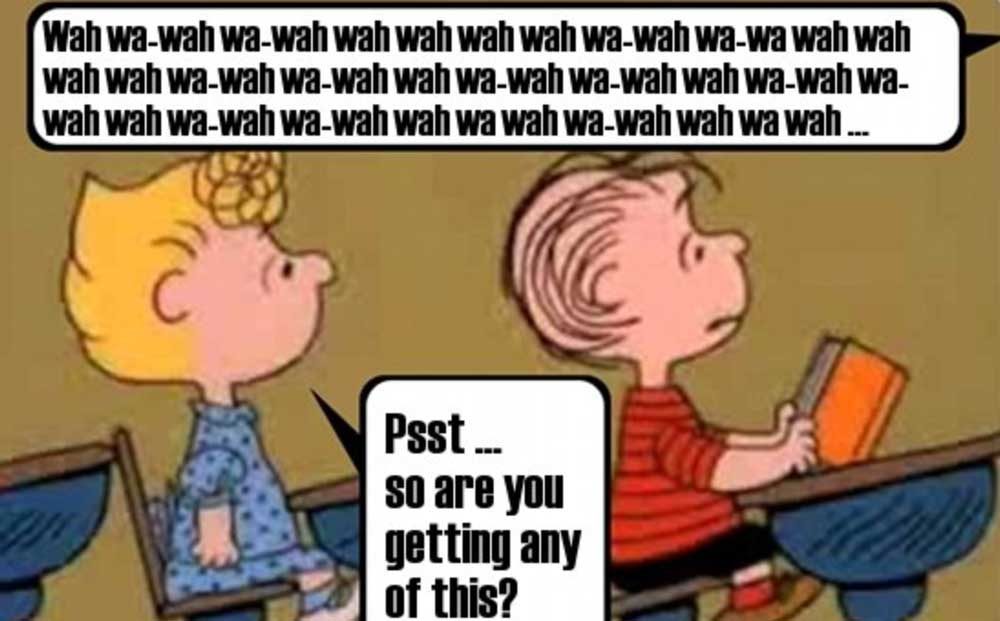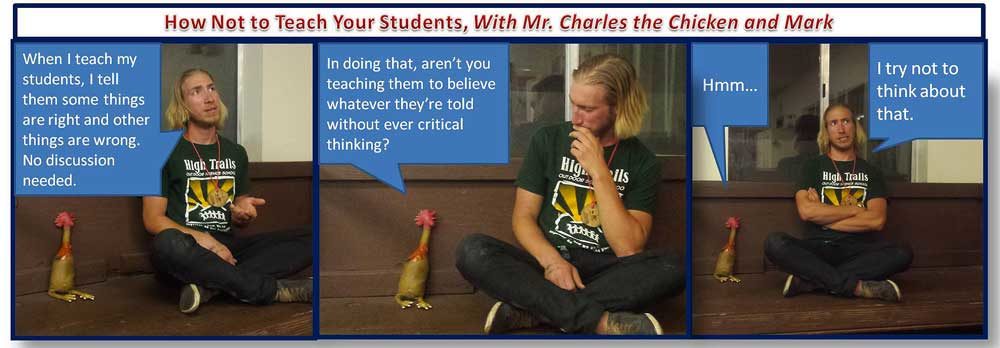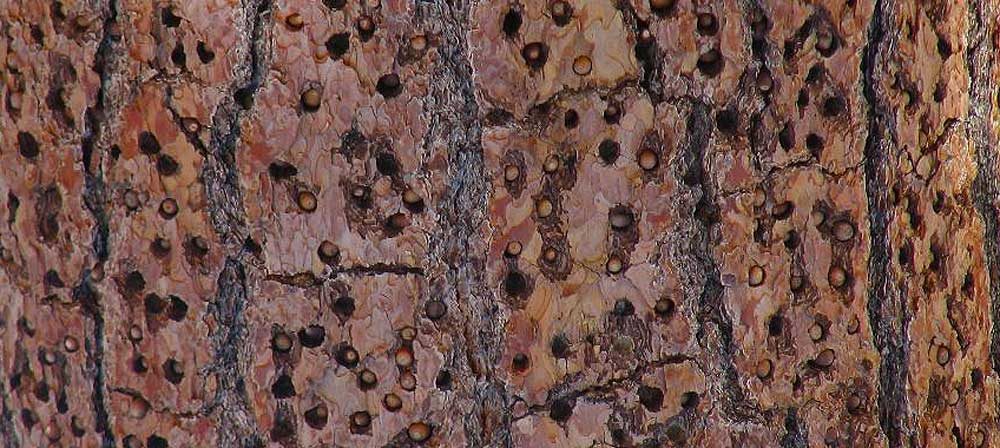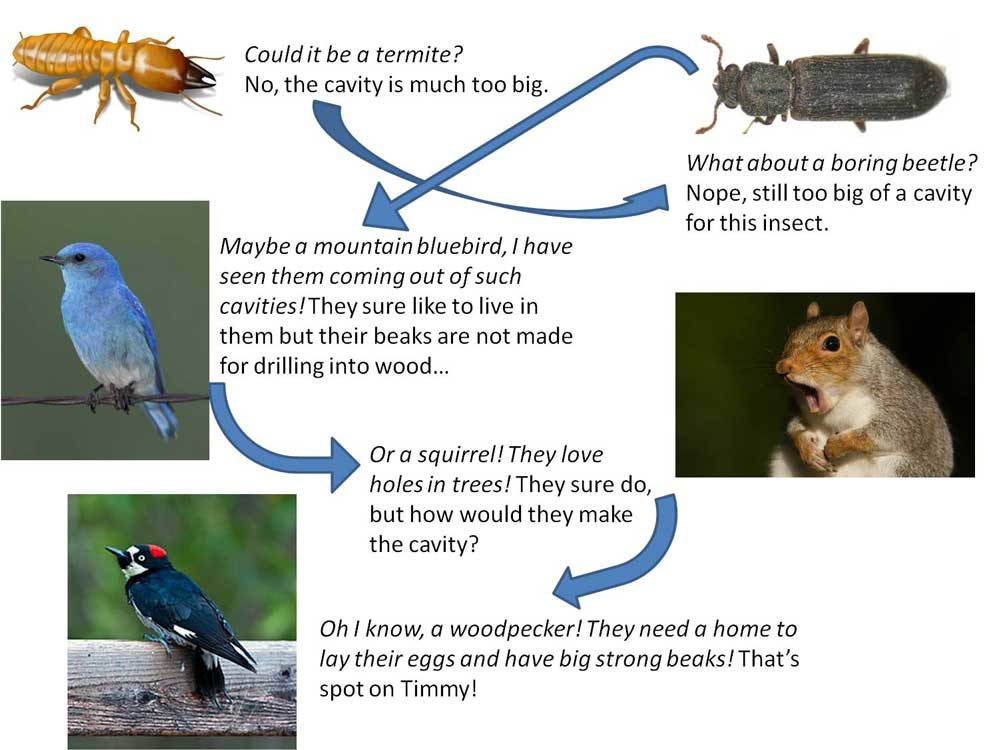Ever have a cool fact, idea, or concept that comes up as you hike that you want to share with the students? These teachable moments happen all the time, and are a great way to add extra information into your lesson plan while engaging the students in critical thinking.
When I first started teaching at High Trails, I would just tell the students the fact and move on. Whoops.
While some students are able to absorb this steady stream of information, for most students it seems to pass right over them since they are not involved in their own learning. Here is a strategy I use now that helps my teaching really connect with students.
 The Concept: Guided Questioning
The Concept: Guided Questioning
Instead, what I like to do now is find as many ways to actively use teachable moments to engage the students in critical thinking throughout their hikes at High Trails. I accomplish this by leading the students through guided questioning when presented with a teachable moment.
Guided questioning helps students come up with an original concept or idea without you outwardly telling them. This allows students to be much more involved in their own learning and stay engaged and focused on the material even while you are hiking.
Step 1: Get them in a Learning Mentality
Before being able to start questioning the students however, it is important to get the group into a good mental space to promote good learning. Whether this means getting the students all in a circle around what you have found (say, a woodpecker cavity) or having them stand in a line so you can show each student individually something small (such as a cool decomposer).
If students are not in a good mental space, it will be challenging to transition them from a hiking mentality to a learning mentality.

Step 2: Involve Everyone
Secondly, it is important to make sure that everyone is involved. Most students are not all on the same page in regards to their “critical thinking skill level”. You will always have certain students who want to answer every question and are well on their way to become critical thinkers. It is still important to feed into this and you can ask these students more challenging questions. Students who do not like to participate as often however may be unsure of themselves in regards to answering questions.
A problem this brings up is that students who are not strong critical thinkers may never answer questions or just answer with “I don’t know”. To help these students get over this, you can involve them by directing easier questions their way. It is also important to frontload that giving the wrong answer is ok! Part of the scientific method is figuring out the wrong answers to achieve the right answer.

Step 3: Hypothesize/Theorize
The third step to a successful teachable moment, once students are focused and involved, is to start asking these questions that promote critical thinking and to get them hypothesizing.
I ask a question in which the answer (or culmination of answers) results in the student coming up with the idea on their own. Here’s an example: In Feathered Friends, while walking by a ~2 inch diameter cavity in a tree, the wrong thing to do is to tell them “a woodpecker made this for a nest” and then just move on.
If you give your students the answer it is kind of like…cheating. Make them work a bit and they will actually learn.
Instead, with this same tree in my Feathered Friends class, I might start by asking: “Who could have made this hole?” Students might start by responding with various insects like termites or beetles. You can point out to these students that the hole is much too large to be made by a small insect and to think of some larger creatures that could be responsible. Some students will excitedly answer with “a woodpecker!” This question might be easier and thus better to direct towards students who are less confident in their answers.
To prompt further, you can ask them: “Why do you think the woodpecker made the hole?” Answers could include making a nest or finding food. (warning…spoiler ahead…) In the case of the ~2 inch diameter hole, it would have been made for a nest.
But Mark, what happens if they can’t answer your question?
If the students are unable to come to the correct answer, I will guide them to the answer by giving them hints or extra pieces of information, often also in the form of a question. “Why might we see woodpeckers excavating in the spring or early summer while other species are flying around with twigs and leaves in their beaks?” (the other birds are building nests to raise young. Woodpeckers are making nests in trees to raise young).
If it is a ~1/2 inch hole in the tree made by a foraging woodpecker for example, I could ask the students “What/Who might be crawling around inside the tree that a bird might be looking for?” Now the students might return to thinking of termites or beetles. From there you could ask them “Why might the bird look for these creatures?” (For food!).

Step 18.5: Take it Further
Once you have engaged the students in critical thinking to help them get to the main idea of the teachable moment, you can start to introduce additional fun facts. For the sake of time, now that students’ attentions have been grabbed you can present these as a mixture of questions and statements. Here’s something I might say:
“Which mammal might want to use this cavity after the woodpecker is done with it? A squirrel! Why? They also like to live in trees. Why can’t they just make their own cavities? They don’t have the proper adaptations to excavate into trees! Species of Bluebirds, Chickadees, and Nuthatches also use old cavities for nesting habitat as they do not have the adaptations to excavate their own. Animals that use cavities made by other species are referred to as Secondary Cavity Nesters!”
And there is just a bit more:
Using teachable moments in this way can also allow the students to connect classes together to create big picture ideas.
For example, have the students identify why the insects are in the tree (decomposing the wood) and which kind of decomposer they are (invertebrates) and then how decomposers are important for birds! You can also connect this to Furry Friends by showing how woodpeckers are important in creating protection for small mammals.
By guiding the students to connect the dots on their own, it helps to solidify the idea in their head. Simply telling them the big picture idea can leave many students unengaged and distracted by the many things they find in the forest. Following through with these strategies can help increase students’ confidence in their own thinking while exploring their natural environment, which is a beautiful thing to see.

At High Trails Outdoor Science School, we literally force our instructors to write about elementary outdoor education, teaching outside, learning outside, our dirty classroom (the forest…gosh), environmental science, outdoor science, and all other tree hugging student and kid loving things that keep us engaged, passionate, driven, loving our job, digging our life, and spreading the word to anyone whose attention we can hold for long enough to actually make it through reading this entire sentence. Whew…. www.dirtyclassroom.com

Comments are closed.